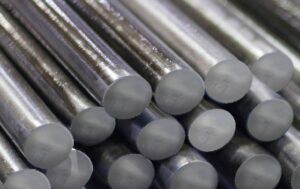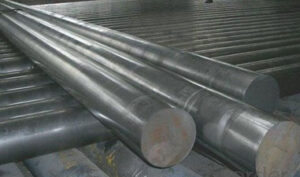Introduction
When it comes to selecting the right material for your project, the choice of alloy is paramount. Stainless steel, known for its durability and corrosion resistance, is a popular choice in various industries. Among the numerous stainless steel alloys available, the 316 stainless steel round bar stands out as a remarkable contender. In this extensive exploration, we will dissect the unique properties of 316 stainless steel and compare them to other alloys to understand why it is often the preferred choice.
- Introduction
- Composition and Properties of 316 Stainless Steel
- Comparative Analysis with Common Alloys
- 316 vs. 304 Stainless Steel
- 316 vs. 316L Stainless Steel
- 316 vs. 317 Stainless Steel
- 316 vs. 410 Stainless Steel
- Applications of 316 Stainless Steel Round Bars
- FAQ
Composition and Properties of 316 Stainless Steel
To appreciate the superiority of 316 stainless steel, we must first understand its composition and properties.
Chemical Composition
- Chromium (Cr): Comprising 16-18% of the alloy, chromium forms a protective oxide layer on the surface, enhancing corrosion resistance.
- Nickel (Ni): With a nickel content of 10-14%, 316 stainless steel exhibits excellent toughness and corrosion resistance.
- Molybdenum (Mo): At 2-3%, molybdenum provides resistance to pitting and crevice corrosion, making it ideal for challenging environments.
- Iron (Fe): The base element of stainless steel, forming the majority of its composition.
Mechanical Properties
- Tensile Strength: Ranging from 515 to 620 MPa, 316 stainless steel excels in high-stress applications.
- Yield Strength: Approximately 205 MPa, indicating its ability to withstand significant stress without permanent deformation.
- Elongation: Typically exceeding 40%, allowing for substantial deformation before breaking.
- Hardness: Around 95 HRB (Rockwell B hardness) when annealed.
Comparative Analysis with Common Alloys
Let’s dive into a comparative analysis of 316 stainless steel with other common alloys to understand its advantages.
316 vs. 304 Stainless Steel
- Corrosion Resistance: While both are corrosion-resistant, 316 outperforms 304, especially in chloride-rich environments.
- Molybdenum Content: 316 contains molybdenum, which 304 lacks, making it more suitable for harsh conditions.
316 vs. 316L Stainless Steel
- Carbon Content: 316L has lower carbon content, enhancing its weldability and corrosion resistance, especially in welded structures.
- Applications: 316L is preferred in industries like chemical processing and pharmaceuticals due to its reduced sensitization to corrosion.
316 vs. 317 Stainless Steel
- Molybdenum Content: 317 has higher molybdenum content, offering even greater resistance to corrosion, especially in acidic environments.
- Applications: 317 is used in highly corrosive settings, such as chemical and pulp processing.
316 vs. 410 Stainless Steel
- Corrosion Resistance: 316 excels in corrosion resistance, while 410 is less resistant and more suitable for low-corrosion applications.
- Hardness: 410 is harder and more suitable for applications requiring wear resistance.
Applications of 316 Stainless Steel Round Bars
316 stainless steel’s exceptional properties find applications in various industries:
- Marine Industry: Ideal for boat fittings and offshore structures due to its corrosion resistance.
- Medical Devices: Used for surgical instruments and medical equipment due to biocompatibility and resistance to body fluids.
- Chemical Processing: Suitable for equipment exposed to corrosive chemicals.
- Food and Beverage Industry: Used for food processing equipment due to its non-reactive nature.
- Aerospace: Combining strength and corrosion resistance for aerospace applications.
FAQ
1. Is 316 stainless steel magnetic?
No, 316 stainless steel is typically non-magnetic as it falls into the category of austenitic stainless steels.
2. Can 316 stainless steel be welded?
Yes, it can be welded, but it’s important to use the appropriate techniques and filler materials to maintain its corrosion resistance.
3. What is the difference between 316 and 316L stainless steel?
316L has lower carbon content, making it more weldable and less prone to sensitization to corrosion in welded structures.
4. Is 316 stainless steel suitable for high-temperature applications?
Yes, it can withstand high temperatures without significant loss of mechanical properties, making it suitable for various temperature conditions.
In conclusion, 316 stainless steel round bars emerge as a superior choice among alloys for a wide range of applications. Their exceptional corrosion resistance, mechanical properties, and comparative advantages over other alloys make them a preferred material across industries where durability and reliability are paramount. Understanding these distinctions empowers engineers and manufacturers to make informed choices for their specific needs.


